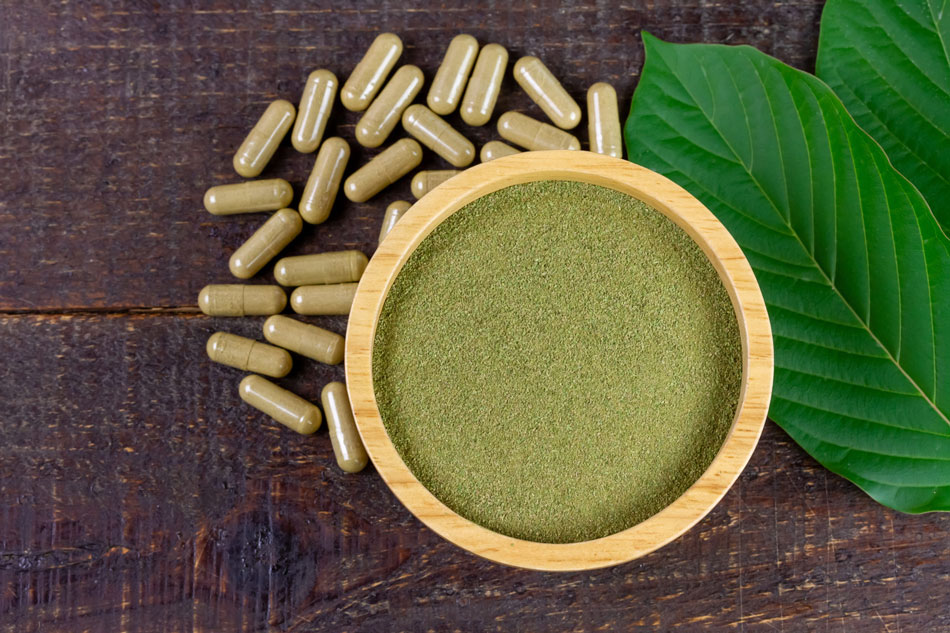
Table of Contents
You might have seen Kratom products sold at your local gas station, pharmacy, or even the local headshop. Plenty of stores are trying to get in on Kratom profits, partly because there is some concern that the drug may not be legal for very long.
Like cannabis, Kratom is a plant product, and plenty of people think that it’s safer to use because it comes from a plant rather than a chemical manufacturing process.
The thing is, plants like nightshade and poison ivy are plants too. Just because something is natural doesn’t mean it’s good for you.
Some people might think that Kratom is beneficial, but there are risks to using Kratom products, and we should look more closely at Kratom and Kratom products before deciding to try them.
If you’ve seen Kratom products on store shelves in your area and have been curious about what they are or even considered giving Kratom a try yourself, you’re in the right place. Learn about the risks behind taking Kratom and the side effects users should prepare for.
What Is White Kratom?
White Kratom, or white vein Kratom, is an extract that some people believe can be used as a natural form of stress relief, mood booster, and even as an aid to opioid withdrawal.
Kratom plants, or Mitragyna Speciosa, come in various types, some of which influence the color of the plant, and all of which are thought to have slightly different effects on the user.
However, like other plant products and supplements, Kratom isn’t very well regulated, which means you don’t have a guarantee that you’re getting Kratom when you buy it, much less which type of Kratom you’ve purchased.
White Kratom can be purchased in powder or capsule form, with relatively little difference in supposed effects from either version of the drug. That said, some people may be able to measure the powder form more precisely. At the same time, the powder form might also make it easier to accidentally take more Kratom than you meant to, which means that dose control can be difficult.
White Kratom is thought to be a good way to help yourself through rough patches by supposedly boosting mental energy, focus, and mood. Some people even advocate using it all the time, the same way we use the caffeine in coffee, as a productivity and happiness booster.
With claims like these, it’s no wonder that some people, including the scientific community, are skeptical of Kratom’s effects and whether it has the power to offer the benefits it claims.
What Are The Side Effects & Dangers Of Using White Kratom?
White Kratom is a drug with many effects and benefits, but it may not be safe. Kratom is known to have a range of side effects that its users might not want or be prepared for, and the benefits of the drug might not outweigh the negatives of the side effects.
Reported symptoms from Kratom fall into two categories, physical and mental side effects. To be clear, we’re only reporting side effects or the things Kratom can do that aren’t why most people use it.
These side effects can occur whether you’re taking the drug for medicinal reasons or recreationally. Currently, Kratom is used for both.
Side effects can happen regardless of the preparation of Kratom. You may have side effects from liquid extracts, powdered white Kratom, and capsules of white Kratom.
Physical Side Effects Of White Kratom
The physical side effects of Kratom include, but are not limited to:
- Nausea and vomiting
- Liver damage
- Headaches/migraines
- Insomnia
- Respiratory Depression
- Loss of Appetite
- Weight Loss
- Tremors
Mental Side Effects Of White Kratom
Mental side effects of white Kratom include but are not limited to:
- Dizziness
- Drowsiness
- Hallucinations
- Delusions
- Seizures
- Depression
Kratom is related to opioid medications and is thought to work similarly and interact with the same neuro receptors that opioid medications do.
However, there is little evidence that Kratom is effective as a withdrawal drug and a fair amount of evidence that Kratom is as dangerous, or potentially more dangerous, than approved opioid medications.
Like anything that interacts with opioid receptors, it’s easy for you to get too much Kratom, and too much Kratom can increase the severity of your side effects.
When it comes to a substance that can cause seizures, comas, depressed breathing, and death, Kratom would have impressive positive effects to be worth taking or to get approved as a therapeutic medication.
Currently, the FDA doesn’t ban Kratom, but they recommend that consumers avoid using any products that contain Kratom.
White Kratom Withdrawal Symptoms
Some people think you can’t get withdrawal symptoms from naturally occurring substances, like Kratom and Cannabis. The truth is that you can get withdrawal symptoms from any drug that can cause a chemical dependence and any drug that causes changes to your body’s natural functioning or chemistry.
That means that if you take Kratom, you may have withdrawal symptoms. In addition, long-term Kratom users will likely have worse withdrawal, and withdrawal is likely to take longer.
However, like many recreational and illicit drugs, withdrawal from Kratom can happen after even a single dose.
The milder withdrawal symptoms after a single Kratom dose might convince users to take more to help reduce the feeling of general malaise and low mood, which are often the first signs of withdrawal.
While there is little scientific information about withdrawal from kratom and kratom products, users report that Kratom withdrawal can include the full spectrum of opioid withdrawal symptoms.
Here are some of the symptoms you should prepare for when you’re getting ready to withdraw from white kratom:
- Nausea
- Vomiting
- Diarrhea
- Constipation
- Moodiness
- Shakes or tremors
- Shivering
- Headache
- General malaise
- Restlessness
- Sweating
- Teary eyes
- Excessive yawning
- Insomnia
- Cramping
- Muscle aches
- Anxiety
There are other possible symptoms, and since most of the symptoms of Kratom withdrawal are from anecdotal reports, it’s also likely that there are additional symptoms that users may not report or might not be noticed immediately.
Since kratom can cause liver damage and is known to risk coma and seizures, especially when taken in high doses, it’s also possible that Kratom may cause longer-lasting damage to various parts of your body. That damage may have symptoms that will last longer than typical withdrawal symptoms but should get better over time.
Addicted To White Kratom? Here’s What You Need To Do
The first thing you need to do if you are addicted to white kratom is to admit that you are addicted. With substances like white Kratom, where so many people think that there is little to no risk and where they often don’t see the early signs of addiction, denial about your symptoms and situation can be your biggest barrier to recovery.
Once you’ve admitted that you’re addicted, the next step is figuring out what support systems you need and can access and what kind of withdrawal setting is going to be best for you.
Some people prefer to go through withdrawal and the early stages of recovery at home, either with friend support, outpatient medical support, or in-home support from friends, family, or medical professionals.
However, other people benefit from going to a treatment center for withdrawal, especially if they have a history of addiction, have been using Kratom for a long time or in high doses, or if they have other medical complications or conditions, including problems that are directly related to Kratom use like liver damage.
Going through withdrawal in a supervised setting with lots of medical support can help prevent a health crisis while you’re going through withdrawal and also puts you in a good position to have the best possible outcome if you have a medical crisis while you’re going through withdrawal.
It’s okay if it takes some time to decide what kind of treatment you might need for kratom addiction. Deciding that you want to get help and recover from addiction can take time, and it’s a big decision with many different factors.
It’s also okay if you need to get more information about different treatment options before you make a decision or are willing to commit to a specific treatment. These are big decisions, and it’s important to ensure you’re ready to commit to whatever option you choose.
If you’re ready to overcome Kratom addiction and see what life without addiction can look like, Ocean Recovery is here to help you. We use various treatment styles and approaches to ensure each of our patients gets the care and attention they need, and we follow the latest science to ensure our information and treatments are up to date and ready for whatever challenges our patients are facing.
You don’t have to do this alone, and there is always hope for recovery.
Sources:
Ocean Recovery has sourcing guidelines and relies on peer-reviewed studies, academic research institutions, and medical associations for our references. We avoid using tertiary references as our sources. You can learn more about how we source our references by reading our Editorial Policy.
- Mayo Clinic. Kratom: Unsafe and ineffective. Mayo Clinic. Published June 3, 2022. Accessed August 13, 2022. https://www.mayoclinic.org/healthy-lifestyle/consumer-health/in-depth/kratom/art-20402171
- Cleveland Clinic. What is Kratom? Uses and Side Effects. Cleveland Clinic. Published June 30, 2021. Accessed August 13, 2022. https://health.clevelandclinic.org/what-is-kratom/
OCEAN RECOVERY EDITORIAL GUIDELINES
The internet contains a vast amount of misinformation, but when it comes to your health only peer reviewed, research centered data matters. At Ocean Recovery, all content published throughout our website has been rigorously medically reviewed by a doctorate level clinician, and cross checked for medical accuracy. Our editorial process helps our readers trust that the information they are consuming is factual and based upon scientific data. Your health is our top priority, find out more about how we safeguard the integrity of information on our website. Read More About Our Process






